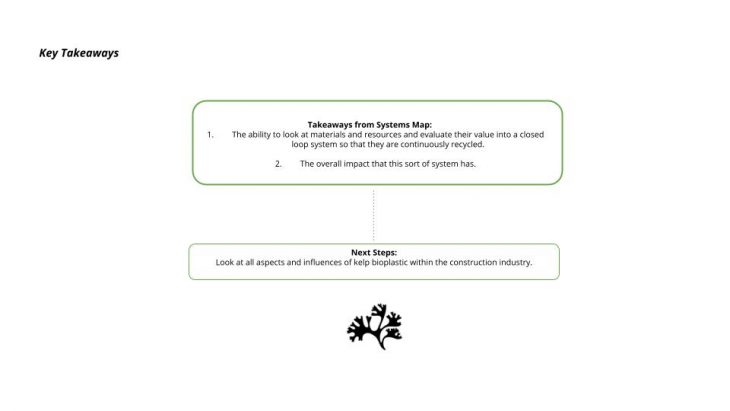CIRCULAR ECONOMY: SYSTEMS MAPPING

// THESIS TOPIC:
There is an increase in emissions of carbon dioxide within the atmosphere due to human activities such as burning of fossil fuels. This is having a considerable effect on the earth as it is causing the greenhouse effect which is pushing up the earth’s temperatures. This directly relates to the ocean. The ocean absorbs up to 30% of carbon dioxide within the atmosphere, leading to an increase in pH levels and water temperatures and causing problems such as ocean acidification. The system that is being introduced is the notion of trying to influence the production process of resources by creating a bio-based material, which in turn through its production it mitigates the effects of climate change.

// SYSTEMS MAP:
The systems map shows related nodes to the topic, keeping average global temperature centralized. The three main contributors to the emissions of carbon dioxide are agriculture, deforestation and burning of fossil fuels (that being the production process and transportation). The lightweight dashed arrows shows these problem node relationships with relation to how they affect each other. Below, the solution system is integrated – that being seaweed aquaculture – is represented with thicker arrows. These nodes interrelate and ultimately show a circular process of systems.

// ICEBERG MODEL:
The research is focusing on the underlying structures level.

// STAKEHOLDER ASSESSMENT:
A list has been drawn up showing all the stakeholders that would be involved in the process of seaweed aquaculture. It is divided into the production (input suppliers, farmers, extraction manufacturers and product stakeholders), government or academic institutions and other stakeholders that may be affected by this industry.

These stakeholders were then mapped based on their level of interest and level of influence. Five stakeholders were then chosen (from all different areas) and looked into further. These five are highlighted below:

// HURDLES & OPPORTUNITIES:
The five highlighted stakeholders have been categorized based on the hurdles that they may face physically, socio-economically or politically. Strategies have been put forward to suggest ways of overcoming these hurdles.
// TIMELINE:
A timeline has been mapped out in order to plan how this system could be implemented into a certain location.

// CONCLUSIONS:
Key takeaways from the workshop and next steps for the thesis project have been written below:

Circular Economy Workshop // Seaweed Aquaculture is a project of IAAC, Institute for Advanced Architecture of Catalonia developed in the Master in Advanced Architecture 2020/21 by:
Student: Ilaena Mariam Napier
Faculty: Tamara Streefland and Nico Schouten
